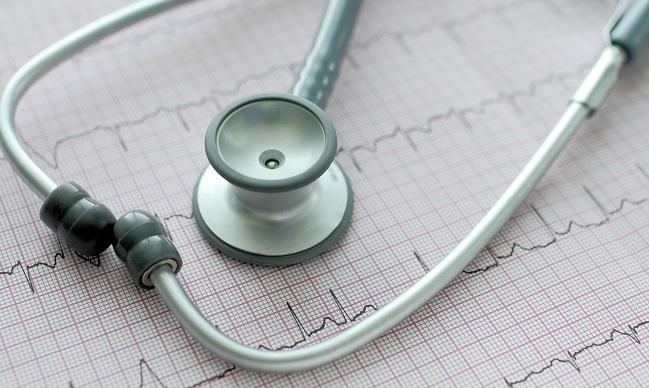Subclinical A-fib Common in Older, Asymptomatic Patients

NEW ORLEANS, LA—Subclinical A-fib detected by implantable loop recorders is frequently observed in in older, high-risk individuals, the prospective ASSERT-II study shows, but what the therapeutic response to such a finding should be—and whether one is needed at all—remains unclear.
Continuous monitoring revealed an annualized rate of 34.4% for subclinical A-fib lasting at least 5 minutes, indicating that the finding was at least as common in this population as it was in the ASSERT and CRYSTAL-AF studies, according to Jeff Healey, MD (Population Health Research Institute, Hamilton, Canada).
Increasing left atrial size was “modestly predictive” of subclinical A-fib, but a prior history of stroke was not associated with the finding, he reported this week at the American Heart Association Scientific Sessions 2016.
The high background rate of subclinical A-fib calls into question whether these episodes are causally related to the occurrence of stroke, Healey said. He added that the strategy for responding to such findings remains uncertain.
“I think it is perhaps premature to recommend any large change in clinical practice as a result of these data,” he said during a Q&A session after his presentation, noting the risk of stroke in studies of subclinical A-fib is quite low at average rates of about 1.5% to 2.0% per year. He pointed out that ongoing randomized trials—such as NOAH and ARTESiA—should provide some information about the value of treating these patients.
Commenting on the study for TCTMD, Mintu Turakhia, MD (VA Palo Alto Health Care System, Palo Alto, CA), said that it confirms the findings from prior studies that subclinical A-fib is extremely common, which is not surprising to clinicians who manage patients with implanted devices.
Turakhia said the results do not have any immediate clinical applications and echoed Healey’s mention of the need for input from ongoing trials regarding how to manage patients with subclinical A-fib, calling it a “real clinical problem.”
“But [ASSERT-II] makes the point that A-fib as a rhythm disturbance is probably far more common than we think and that many of these patients aren’t getting care for it, at least at the time that it starts to develop,” he said. “And what we don’t know is if early intervention before it clinically declares itself is of importance.”
Moving forward, Turakhia said that he’d like to see a greater focus on precision medicine in this area and a move away from “oversimplified” risk scores.
“We’re in an era of informatics and analytics and really strong statistical methods, so we need better decision support that can factor in a wide range of these things to understand a patient’s risk and then to define treatment based on that,” he said, noting that it might take 5 to 10 years or longer to get all of the data inputs needed to make individualized estimates on which to base that decision. “But this whole risk score idea that ignores many other factors that may be mechanistically important is something that we have to think seriously about discarding,” Turakhia stressed.
ASSERT-II
Prior studies have demonstrated that subclinical A-fib is relatively common, Healey said. In ASSERT, which included patients with pacemakers or implantable cardioverter-defibrillators (ICDs), the rate of subclinical A-fib lasting longer than 6 minutes that was detected within 1 year was 23%. And in the CRYSTAL AF study of patients who had had a cryptogenic stroke, 12.4% had episodes lasting more than 30 seconds in 1 year of monitoring.
ASSERT-II was designed to explore the issue in a more general population of older, asymptomatic patients with cardiovascular risk factors and A-fib risk markers but no prior diagnosis of A-fib. All patients were 65 or older (mean age 74), and about half (48%) had a history of stroke, TIA, or systemic embolism. The average CHA2DS2-VASc score was high at 4.14.
Overall, 256 patients were implanted with the St. Jude Medical Confirm (DM2100) loop recorder for continuous monitoring. Four patients died, and 252 completed at least 9 months of follow-up (mean 16.3 months).
Annualized rates of subclinical A-fib, according to duration of the episodes, were as follows:
- At least 5 minutes: 34.4%
- At least 30 minutes: 21.8%
- At least 6 hours: 7.1%
- At least 24 hours: 2.7%
Prespecified subgroup analysis showed that patients with a left atrial volume of 73.5 mL or greater were more likely to have an episode lasting at least 5 minutes (51.9% vs 27.4%; HR 1.85; 95% CI 1.13-3.03), but there were no other significant interactions.
Knowledge Gaps Remain
Serving as a discussant following Healey’s presentation, N.A. Mark Estes III, MD (Tufts University School of Medicine, Boston, MA), said ASSERT-II adds new data showing that subclinical A-fib detected by implantable loop recorders is common in older patients with and without prior stroke and high CHA2DS2-VASc scores.
Thus, he said, “it substantially weakens the case” that subclinical A-fib is causally related to the occurrence of stroke.
But, he said, there are many remaining questions regarding the temporal relationship between stroke and subclinical A-fib; thresholds for increased stroke risk when looking at A-fib duration and burden and risk scores; the risks, benefits, and costs of anticoagulation in patients with subclinical A-fib; the use of continuous versus intermittent anticoagulation; and whether A-fib is a marker of stroke risk.
Todd Neale is the Associate News Editor for TCTMD and a Senior Medical Journalist. He got his start in journalism at …
Read Full BioSources
Healey JS. ASSERT-II: sub-clinical AF (SCAF) in older asymptomatic patients. Presented at: American Heart Association Scientific Sessions. November 15, 2016. New Orleans, LA.
Disclosures
- The study was sponsored by St. Jude Medical and the Canadian Institutes of Health Research.
- Healey and Estes report no relevant conflicts of interest.
- Turakhia reports relationships with Janssen Pharmaceuticals, Medtronic, St. Jude Medical, and Daiichi Sankyo.


Comments